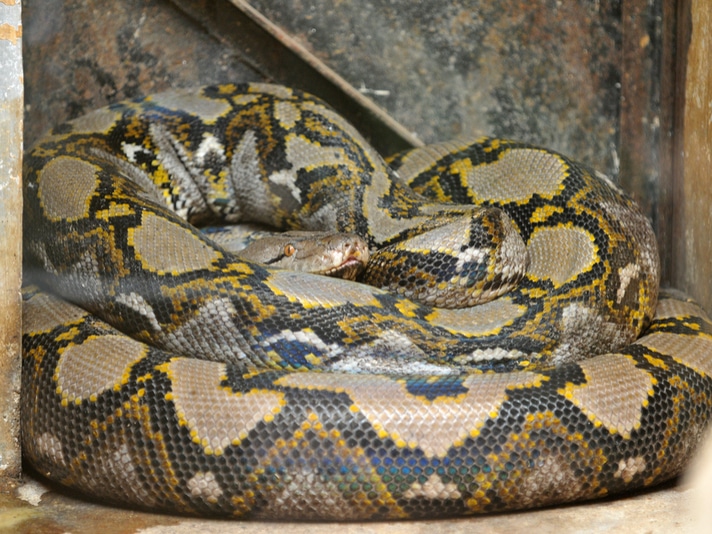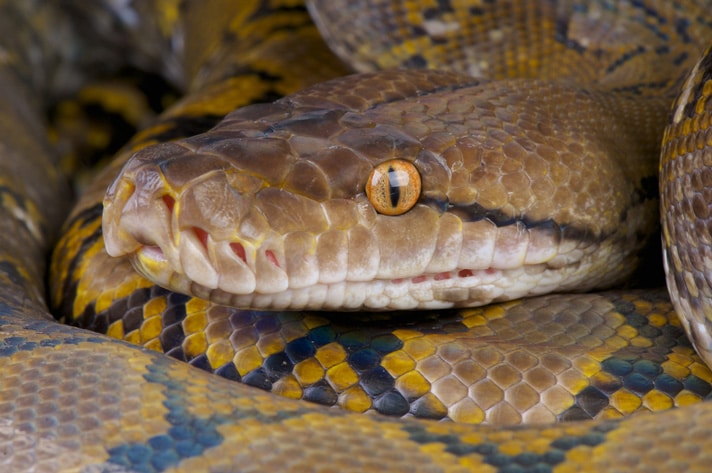In 2017, a 25-year-old man was swallowed by a reticulated python in the Southeast Asian nation. In 2018, a 54-year old woman who was checking her vegetable garden was killed and eaten by a reticulated python. In both cases, the snakes were measured to be 23-feet in length.
An estimated 22-foot long reticulated python (Python reticulatus) was found to have eaten a 54-year old woman in Indonesia. Times of India reports that the woman, named Jahrah, went to work at a rubber plantation and never returned. Jahrah was apparently collecting rubber October 21 when she disappeared. Her husband conducted a search of the forest in which the plantation is located and found the woman’s sandals, jacket, head scarf and knife. A further search of the area found the large constricting snake with a noticeable bulge in its belly. Locals cut the python open and found Jahrah inside.
Why (And How) A Reticulated Python Managed To Consume An Indonesian Woman
5 Facts About The Reticulated Python
This marks the third time since 2017 that a human was consumed by a python in Indonesia. In 2017, a 25-year-old man was swallowed by a reticulated python in the Southeast Asian nation. In 2018, a 54-year old woman who was checking her vegetable garden was killed and eaten by a reticulated python. In both cases, the snakes were measured to be 23-feet in length.

Shahrul Azman/Shutterstock
Experts have speculated that the attacks by these large constricting snakes may be due to issues such as deforestation to make way for palm oil production, which negatively alters the landscapes where these large reptiles live.
“The larger ones love to crawl and climb, and they get a lot of their food from the forests and the trees,” Max Nickerson of the Florida Museum of Natural History told National Geographic in 2018. And when those forests are cut down to make way for palm oil plantations, the natural prey of the reticulated python; small mammals, birds, and deer, disappear along with the trees and rainforest plants.
While it does seem rare that humans get eaten by large constricting snakes, it does occur. A 2011 study of reticulated python interactions with the Agta Negrito tribe on the main island of Luzon in the Philippines shows that the snakes do attack humans. The study determined that from 1934 to 1973, 16 members of the tribe were attacked by the reticulated python, and of those 16, six of the attacks were fatal.
The Agta Negrito are a small people; an adult male averages less than 100 pounds in weight. It was previously believed that it would be impossible for a reticulated python to consume a human because the thought was that the human shoulders are too wide for a snake to wrap its jaws around, but this has never really been the case, as studies have shown.
Reticulated Python Information
The reticulated python is considered the world’s longest snake and one of the three heaviest snakes. It is found throughout much of Southeast and South Asia, including Indonesia, the Philippines, India, and Borneo. The snake is popular with expert reptilekeepers, though prior to captive breeding efforts over the last 30 plus years in the United States, the species was considered hard to handle due to its ill temperament.


